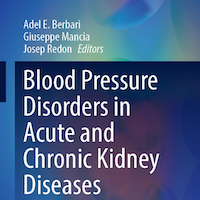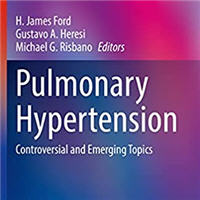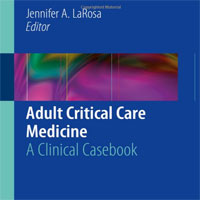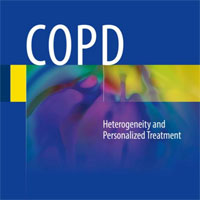Tag: hypertension
Cardiac Intensive Care
Using a multidisciplinary, team-oriented approach, this unique title expertly covers all the latest approaches to the assessment, diagnosis, and treatment of patients with critical cardiac illness. Led by Dr David L. Brown,... read more

Blood Pressure Disorders in Acute and Chronic Kidney Diseases (Updates in Hypertension and Cardiovascular Protection)
This new book is intended to be an in-depth and up-to-date guide to the various aspects of the association between blood pressure disorders and acute/chronic renal diseases. In addition, this work includes discussion... read more

Promising Prognostic Predictors in Sepsis Patients Using Lactate and Albumin Ratio
Serum Lactate/Albumin ratio and BAR ratio were significantly higher in sepsis and/or septic shock and associated with increased length of hospital stay and increased in-hospital mortality and poor clinical outcome inside... read more
VAP in Patients with Increased Intra-abdominal Pressure
Critically ill patients with increased intra-abdominal pressure (IAP) and multidrug-resistant (MDR) ventilator-associated pneumonia (VAP) are considered a challenging patient population in every ICU setting. Patients with... read more
Pulmonary Hypertension: Controversial and Emerging Topics
This book is a clinical guide to controversial and emerging topics in pulmonary hypertension. There are multiple challenges and unanswered questions encountered by clinicians that evaluate, diagnose and treat patients with... read more

Pulmonary Hypertension: Basic Science to Clinical Medicine
This book provides the framework for a singular reference in the field of pulmonary hypertension. Pulmonary vascular disease is a complex and heterogeneous condition characterized by remodeling of distal pulmonary arterioles... read more

Adult Critical Care Medicine
This clinical casebook provides a comprehensive yet concise state-of-the-art review of adult critical care medicine. Presented in a case-based format, each case focuses on a scenario commonly encountered with an adult patient... read more

Diagnostic Value of Chest X-ray in Acute Pulmonary Thromboembolism
This case underscores the diagnostic value of chest X-ray in acute pulmonary thromboembolism (PTE), highlighting the significance of recognizing classical radiographic signs such as Westermark's, Palla's, Fleischner's and... read more
COPD: Heterogeneity and Personalized Treatment
This book explains how analysis of the heterogeneity of chronic obstructive pulmonary disease (COPD) enhances understanding of the condition and leads to improved, personalized treatment. State of the art knowledge is presented... read more

Diastolic Dysfunction Increases AKI Rick in COVID-19 Patients
Diastolic dysfunction increases the risk of acute kidney injury (AKI) in patients with severe COVID-19. Using point-of-care ultrasound (PoCUS) to assess left ventricular diastolic function in the ICU may be a useful parameter... read more
RSV Infection – Epidemiology and Clinical Risk Factors
Respiratory syncytial virus (RSV) infection is the most frequent reason for hospitalization of infants in developed countries. Premature birth without or, especially, with chronic lung disease of prematurity, congenital heart... read more
Cardiac Damage in Patients Infected with Different COVID-19 Variants of Concern
Coronavirus Disease 2019 causes significant morbidity, and different variants of concern (VOCs) can impact organ systems differently. We conducted a single-center retrospective cohort analysis comparing biomarkers and... read more
Optimizing ICU Weaning: Globalizing Personalized Weaning Strategies
this study provides compelling evidence supporting the concept of individualized weaning in the ICU. By tailoring spontaneous breathing trial (SBT) methods to match specific patient conditions, it represents an essential... read more
The Beta-Blocker Story: Getting It Right
The idea of using beta-blockers as a treatment for ventricular fibrillation occurred to James Black over 60 years ago. He developed propranolol and cimetidine, among other pharmacologic agents, work for which he won the Nobel... read more

Effects of Surgery on Hemodynamics and Postoperative Delirium in Stanford Type A Aortic Dissection
The results of this study indicate that surgical intervention has a significant effect on improving patients’ hemodynamic parameters, with postoperative MAAD and LVEDd reduced compared to preoperative levels, while LVEF... read more
Influenza-Complicated Thromboembolism in the ICU
Influenza-complicated thromboembolism (TE) among patients with severe influenza infection in the intensive care unit (ICU) is associated with increased risk for longer- duration mechanical ventilation, longer ICU stays, and... read more
Veno-Arterial-Venous ECMO in a Patient Undergoing Dialysis and Having Cardiopulmonary Failure Due to COVID-19
COVID-19 can cause cardiomyopathy, a rare cardiovascular disorder that can lead to cardiogenic shock. The cardiac and respiratory symptoms may not occur simultaneously, and it is possible to switch to veno-arterial-venous... read more
Comorbid Burden at ICU Admission in COVID-19 vs. Sepsis and ARDS
The burden of age and comorbidity is more prominent in ICU-admission for sepsis and acute respiratory distress syndrome (ARDS) than for COVID-19. This is likely to be caused by a combination of COVID-19 affecting the relatively... read more
Prevalence and Risk Factors of ICU-acquired Weakness in COVID-19 Patients
The prevalence of ICUAW in patients with COVID-19 was considered relatively high. Older age, pre-existing hypertension, medical intervention of prone position, NMBA use, needed tracheostomy and RRT were likely risk factors.... read more
Cardiac Arrest Following Prone Positioning
The complications that can arise from the prone position are often underestimated. Proceduralists, surgeons, and anesthesiologists need to be thoroughly knowledgeable about the common physiological changes that can occur... read more
Using Diuretic Therapy in the Critically Ill Patient
Diuretics are routinely prescribed in critically ill patients but significant variation in practice exists. In this article, we summarize current data relevant to diuretic prescribing. What are the indications for diuretics... read more
Critical Hypertension in Trauma Patients Following Prehospital Emergency Anesthesia
Delivery of prehospital emergency anesthesia (PHEA) to seriously injured trauma patients risks hemodynamic fluctuation. In adult trauma patients undergoing PHEA, 11.9% of patients experienced post-PHEA critical hypertension.... read more









